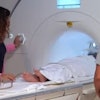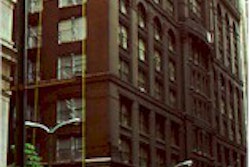CHICAGO – Computed tomography shows a variety of urologic findings not visible with traditional intravenous pyelography. But since IVP also serves up its share of unique findings, researchers at the Mayo Clinic in Rochester, MN, looked at combining exams in a single patient encounter with a single contrast injection.
At Sunday’s genitourinary scientific sessions at RSNA, Dr. Terri Vrtiska from the Mayo Clinic in Rochester, MN presented a study of 500 patients evaluated with both methods between March and September 2000. The patients, ages 19-86 and predominantly male (2:1), were referred to the clinic for a variety of conditions including transitional cell carcinoma follow-up, hematuria, stone disease, urinary tract obstruction and evaluation of masses.
“All of these patients were referred by clinicians who felt the patient would need both an IVP and a CT scan in the course of their clinical evaluation,” Vrtiska said. “In order to create a one-stop shopping evaluation, what we did was modify a multidetector-row CT scanner by placing an x-ray tube above a CT tabletop,” also modifying the tabletop to allow insertion of a combined slip-on grid/standard film cassette, she said.
The purpose of the study was to assess the unique strengths of CT urography vs. IVP in the practice, Vrtiska said.
“The advantage of CT, of course, is in evaluation of the renal parenchyma, the bladder and the other abdominal organs, and the advantage of IVP, we felt, was looking at the collection system, their function and drainage, and the nice 2-D display.”
A KUB urographic film was obtained for each patient, followed by unenhanced renal CT. Then contrast material was injected and multiphase contrast renal CT was performed, followed by the application of urethral compression. Patients were then removed from the CT scanner and 8- and 10-minute film-screen urograms were obtained. Excretory-phase renal CT and postvoid film completed the study, she said.
The CT urograms were interpreted prospectively by genitourinary radiologists and clinically significant findings tabulated. In all, there were significant clinical findings in 255 patients, and no significant findings in 245. Because some patients had multiple abnormalities, there were 338 significant findings in total.
While 76% of the significant findings involved the genitourinary tract, 24% were extraurinary, Vrtiska said. Broken down by modality, 91% of the findings were adequately visualized on CT alone, while IVP alone found 9%.
“In CT, as you would expect, we found evidence of neoplasms, stone disease with its complications, we found some incidentally detected aneurysmal dilitation of the aorta and iliac arteries. We also saw several tumors that were unknown at the time of presentation, lymphoma, carcinoid, even a case of liposarcoma, and incidentally discovered pancreatic carcinoma,” she said. In all there were 23 cases of metastatic disease or lymphoma, 27 patients with renal masses, 41 with adrenal masses, 102 with stone disease, and 21 cases of obstruction visualized uniquely with CT.
The 9% of significant findings that were adequately visualized with IVP alone included 31 calyceal or ureteral abnormalities, 12 cases of medullary sponge kidney, nine filling defects, six cases of papillary necrosis, three of chronic atrophic pyelonephritis and one prominent crossing vessel, she said.
“In conclusion, we believe that both CT and quality IVP are important in this evaluation,” she said. “In our experience, 91% of the significant findings [were] best seen by CT, however, 9% were best seen on the IVP evaluation. This type of exam allows a one-stop comprehensive evaluation, and in our practice we have had excellent physician acceptance due to our ability to obtain both a CT and IVP using a single injection of contrast material.”
Following the suggestion of an audience member, Vrtiska said that expanding the CT protocol to include sagittal, coronal and multiplanar views would be a logical next step.
By Eric Barnes
AuntMinnie.com staff writer
November 27, 2000
At Sunday’s genitourinary scientific sessions at RSNA, Dr. Terri Vrtiska from the Mayo Clinic in Rochester, MN presented a study of 500 patients evaluated with both methods between March and September 2000. The patients, ages 19-86 and predominantly male (2:1), were referred to the clinic for a variety of conditions including transitional cell carcinoma follow-up, hematuria, stone disease, urinary tract obstruction and evaluation of masses.
“All of these patients were referred by clinicians who felt the patient would need both an IVP and a CT scan in the course of their clinical evaluation,” Vrtiska said. “In order to create a one-stop shopping evaluation, what we did was modify a multidetector-row CT scanner by placing an x-ray tube above a CT tabletop,” also modifying the tabletop to allow insertion of a combined slip-on grid/standard film cassette, she said.
The purpose of the study was to assess the unique strengths of CT urography vs. IVP in the practice, Vrtiska said.
“The advantage of CT, of course, is in evaluation of the renal parenchyma, the bladder and the other abdominal organs, and the advantage of IVP, we felt, was looking at the collection system, their function and drainage, and the nice 2-D display.”
A KUB urographic film was obtained for each patient, followed by unenhanced renal CT. Then contrast material was injected and multiphase contrast renal CT was performed, followed by the application of urethral compression. Patients were then removed from the CT scanner and 8- and 10-minute film-screen urograms were obtained. Excretory-phase renal CT and postvoid film completed the study, she said.
The CT urograms were interpreted prospectively by genitourinary radiologists and clinically significant findings tabulated. In all, there were significant clinical findings in 255 patients, and no significant findings in 245. Because some patients had multiple abnormalities, there were 338 significant findings in total.
While 76% of the significant findings involved the genitourinary tract, 24% were extraurinary, Vrtiska said. Broken down by modality, 91% of the findings were adequately visualized on CT alone, while IVP alone found 9%.
“In CT, as you would expect, we found evidence of neoplasms, stone disease with its complications, we found some incidentally detected aneurysmal dilitation of the aorta and iliac arteries. We also saw several tumors that were unknown at the time of presentation, lymphoma, carcinoid, even a case of liposarcoma, and incidentally discovered pancreatic carcinoma,” she said. In all there were 23 cases of metastatic disease or lymphoma, 27 patients with renal masses, 41 with adrenal masses, 102 with stone disease, and 21 cases of obstruction visualized uniquely with CT.
The 9% of significant findings that were adequately visualized with IVP alone included 31 calyceal or ureteral abnormalities, 12 cases of medullary sponge kidney, nine filling defects, six cases of papillary necrosis, three of chronic atrophic pyelonephritis and one prominent crossing vessel, she said.
“In conclusion, we believe that both CT and quality IVP are important in this evaluation,” she said. “In our experience, 91% of the significant findings [were] best seen by CT, however, 9% were best seen on the IVP evaluation. This type of exam allows a one-stop comprehensive evaluation, and in our practice we have had excellent physician acceptance due to our ability to obtain both a CT and IVP using a single injection of contrast material.”
Following the suggestion of an audience member, Vrtiska said that expanding the CT protocol to include sagittal, coronal and multiplanar views would be a logical next step.
By Eric Barnes
AuntMinnie.com staff writer
November 27, 2000
Copyright © 2000 AuntMinnie.com
Click here to view the rest of AuntMinnie’s coverage of the 2000 RSNA conference.
Click here to post your comments about this story.



















